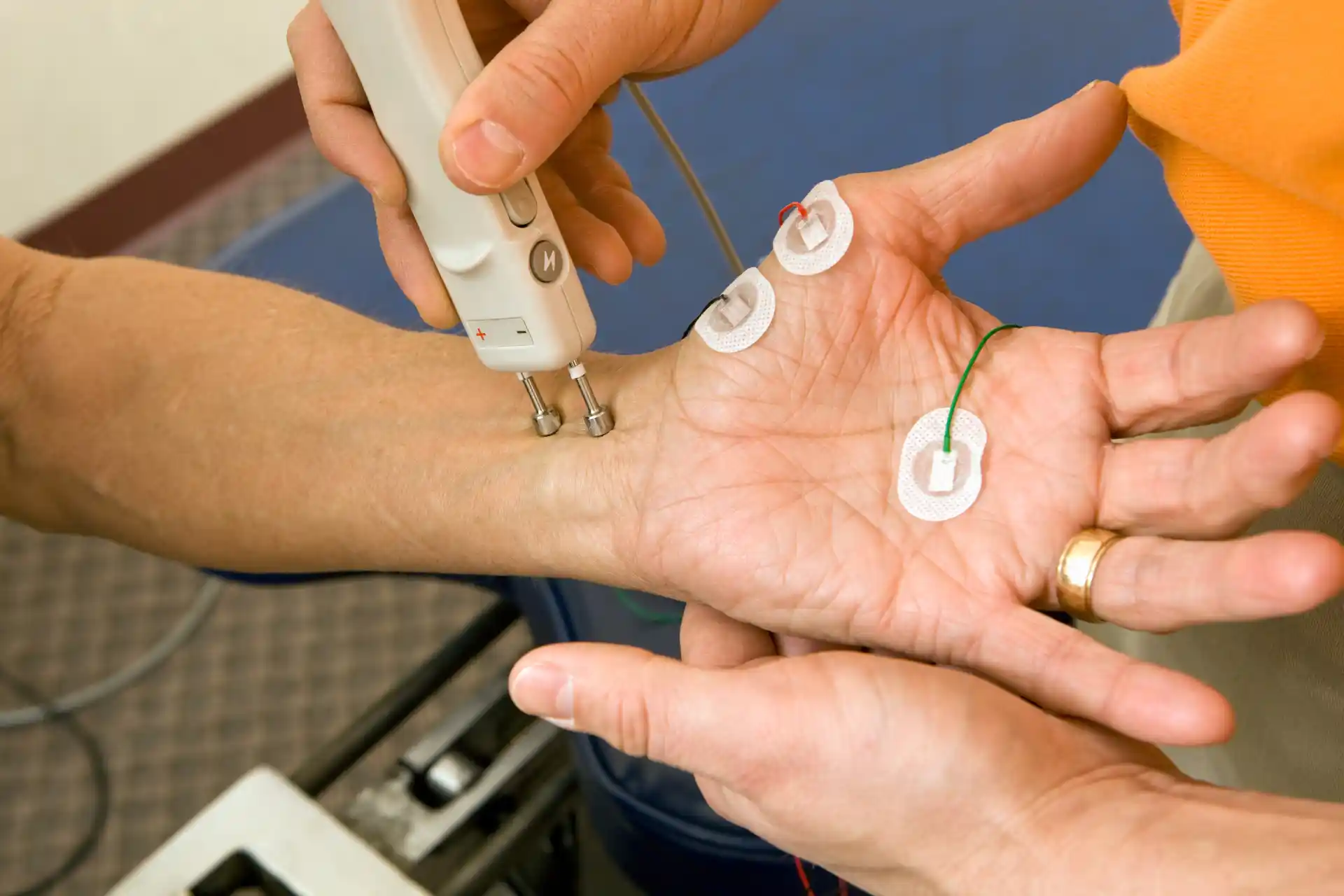Understanding Shoulder Impingement
What is Shoulder Impingement?
Shoulder impingement occurs when the rotator cuff tendons are compressed as they pass between the acromion (a bony projection on the scapula) and the humeral head (the top of the upper arm bone).
This condition often leads to pain and inflammation, especially when you raise your arm. Athletes or individuals who frequently engage in overhead activities are particularly susceptible.
When left untreated, shoulder impingement can progress to more severe conditions like rotator cuff tears.
Causes of Shoulder Impingement
Several factors can contribute to shoulder impingement. Understanding these causes can help you take preventive measures and seek appropriate treatment.
- Repetitive Overhead Activities: Sports like swimming, tennis, and baseball involve repetitive overhead actions, increasing the risk of shoulder impingement.
- Poor Posture: Slouching or rounded shoulders can narrow the space through which the tendons pass, causing compression.
- Muscle Imbalances: Weak or tight shoulder muscles can alter the shoulder mechanics, leading to impingement.
- Age-Related Degeneration: The tendons and surrounding structures may degenerate and become more susceptible to impingement as you age.
- Previous Injuries: Past shoulder injuries, such as rotator cuff tears or torn labrum, can contribute to impingement.
Common symptoms of shoulder impingement include pain when lifting your arm, shoulder weakness, and difficulty reaching behind your back.
Identifying the underlying cause is crucial for effective treatment and prevention.
If the condition persists, professional guidance from a healthcare provider is recommended.
The Empty Can Test
The Empty Can Test, also known as the Jobe's Test, is a clinical assessment used to identify shoulder impingement and rotator cuff injuries, particularly involving the supraspinatus muscle.
The test mimics the position of pouring out a can, hence its name. It is widely employed by physicians, physiotherapists, and athletic trainers to determine the integrity of the rotator cuff and shoulder structure.
This test helps in diagnosing conditions like rotator cuff tendinitis, rotator cuff tear, and shoulder impingement.
How to Perform the Empty Can Test Correctly
To perform the Empty Can Test accurately, follow these steps:
- Position the Subject: Have the person stand or sit comfortably with their arm relaxed by their side.
- Arm Elevation: Instruct the person to lift their arm to 90 degrees in the scaption plane (the plane angled between the front and side of their body).
- Thumb Position: Ask them to rotate their arm internally so that their thumb points downward, simulating the action of emptying a can.
- Apply Downward Pressure: The examiner or tester applies light to moderate downward pressure on the arm.
- Observe and Inquire: Pay attention to any signs of pain, weakness, or discomfort the person exhibits while resisting the downward pressure.
It's crucial for athletes and individuals performing this test to seek professional guidance if they experience significant discomfort or consistent symptoms.
What Do the Results Mean?
The Empty Can test assesses the integrity of the supraspinatus muscle, one of the rotator cuff muscles. It helps identify if there is a tear or tendinitis.
- Positive Test: If you experience pain or weakness when performing the test, it may indicate a supraspinatus tear or rotator cuff tendinitis.
- Negative Test: If there is no pain or weakness, it is less likely that you have significant supraspinatus pathology, but other conditions like shoulder instability or a labral tear could still be present.
It's important to note that while the empty can test provides useful information, it should not be the sole determinant of a diagnosis.
Combining this with other tests, such as the Hawkins Kennedy test and the Drop Arm test, offers a more comprehensive evaluation.
When to Seek Professional Guidance
You should consult a healthcare professional if you experience:
- Consistent Pain: Ongoing shoulder discomfort, especially if combined with weakness or loss of function, necessitates medical evaluation. This could indicate a rotator cuff tear or other serious condition requiring intervention.
- Limited Range of Motion: If you find it difficult to move your shoulder through its full range of motion, this might signal shoulder impingement or a torn rotator cuff.
- Persistent Weakness: Muscle weakness without improvement, even after rest and shoulder pain exercises, suggests a need for professional assessment.
When in doubt, a professional can provide a thorough examination and suggest advanced diagnostic tools like an MRI to confirm the presence and extent of any rotator cuff injury.
Explore more insights on how to differentiate different shoulder injuries such as frozen shoulder vs impingement.
Exercises and Treatment
To effectively manage shoulder impingement and aid in recovery, incorporating specific exercises and treatments is essential.
These interventions can help alleviate pain, improve mobility, and strengthen the muscles around the shoulder joint.
Always consult with a healthcare professional or physical therapist before starting a new exercise and treatment regimen for your shoulder dysfunction.
Exercises to Help Shoulder Impingement
Exercises play a crucial role in the treatment of shoulder impingement. Focusing on strengthening and stretching the rotator cuff muscles can enhance stability and reduce pain.
Here are some recommended exercises:
Pendulum Swings
- Lean forward, using a table or chair for support.
- Let the affected arm hang down.
- Gently swing your arm in small circular motions.
- Perform for 1-2 minutes.
Internal and External Rotation
- Use a resistance band anchored at waist height.
- Hold the band with the affected arm at a 90-degree angle.
- Rotate your forearm away from your body (external rotation), then toward your body (internal rotation).
- Perform 3 sets of 10-15 repetitions.
Scapular Squeezes
- Sit or stand with a straight back.
- Squeeze your shoulder blades together.
- Hold for 5 seconds and then relax.
- Repeat 10-15 times.
Shoulder Flexion
- Stand with your arms at your sides.
- Slowly raise your arm in front of you to shoulder height.
- Hold for a few seconds, then lower it back down.
- Perform 3 sets of 10 repetitions.
For more detailed instructions, see our article on shoulder impingement exercises.
Other Treatment Options and Considerations
In addition to exercises, there are other treatment methods that can be effective in managing shoulder impingement.
These options can vary based on the severity of your condition and your individual needs.
Physical Therapy
Working with a physical therapist can provide you with a tailored treatment plan that includes exercises, manual therapy, and modalities such as ultrasound or electrical stimulation. Learn more about physical therapy for shoulder pain.
Medications
Nonsteroidal anti-inflammatory drugs (NSAIDs) can help reduce inflammation and alleviate pain.
Always consult with a healthcare professional before taking any medication.
Corticosteroid Injections
In some cases, a doctor may recommend corticosteroid injections to reduce inflammation and alleviate pain in the shoulder joint.
Lifestyle Modifications
Avoid activities that aggravate your symptoms and focus on maintaining good posture.
Ergonomic adjustments at work and during daily activities can also help reduce strain on your shoulder.
Always consult with a healthcare provider before beginning any new treatment regimen to ensure it is appropriate for your condition.
Seek RELIEF®
RELIEF® is a science-backed, targeted approach that targets dysfunctional soft tissue, also known as fascia, that surrounds the affected shoulder joint and rotator cuff.
The treatment utilizes hydrodissection—a fluid-based technique that gently separates and releases adhered soft tissue layers and fascia, which may contribute to shoulder pain and joint instability.1,2,3,4,5,6,7
RELIEF® is a minimally invasive alternative to traditional treatments—and requires no steroids, medication, surgery, anesthesia, or post-procedure immobilization.
Contact us today to schedule a consultation and learn more about how RELIEF® may help with your shoulder impingement and rotator cuff dysfunction.
.webp)





.svg)